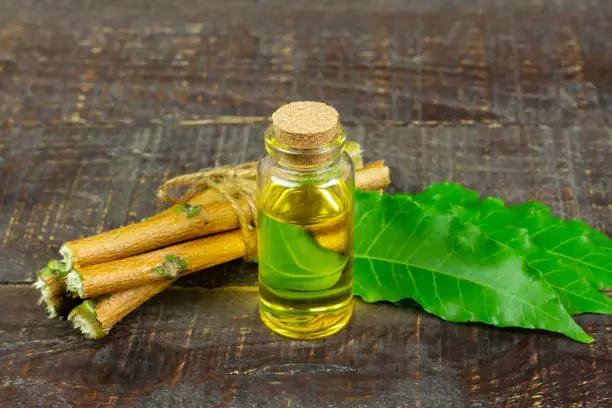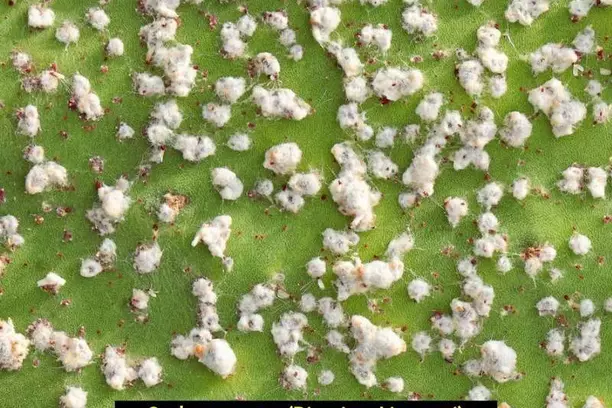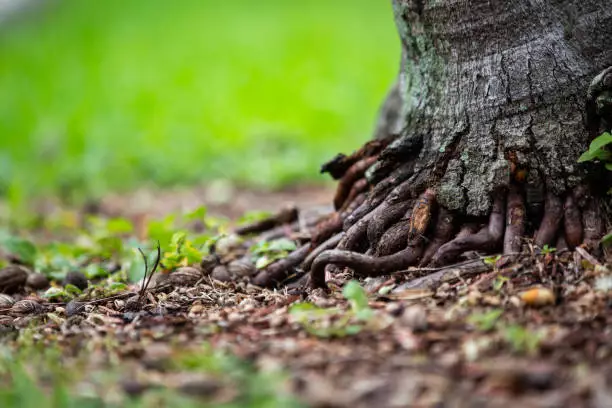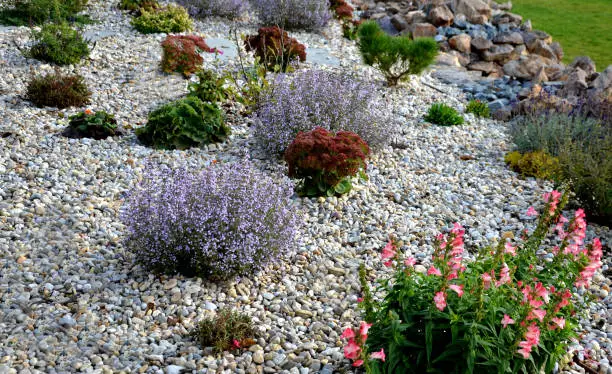Both belong to the Marantaceae family and share similar characteristics such as their distinctive foliage and preference for high humidity. However, there are some differences between the two that are worth noting.
One of the main differences between Maranta and Calathea is the shape of their leaves. Maranta leaves are typically oval-shaped and have a pointed tip, while Calathea leaves are more elongated and have rounded tip. Additionally, Maranta leaves tend to be more colorful and variegated than those of Calathea, with intricate patterns of green, red, and purple. On the other hand, Calathea leaves are often marked with bold stripes or spots, giving them a more dramatic appearance.
Another key difference between Maranta and Calathea is their growth habit. Maranta plants are generally smaller and more compact, making them an ideal choice for those with limited space. Calathea, on the other hand, can grow quite large and may require more room to thrive. Additionally, Maranta plants are known for their ability to fold their leaves up at night, while Calathea leaves remain open. Overall, both Maranta and Calathea are beautiful and unique plants that can add a touch of tropical flair to any home or garden.
Understanding Maranta and Calathea
Maranta and Calathea are two popular genera of the Marantaceae family of tropical plants that are often confused with each other. They are both known for their attractive foliage and are commonly grown as houseplants. However, there are some key differences between the two that are worth noting.
Maranta
Maranta plants are also known as prayer plants due to the way their leaves fold up at night, resembling hands in prayer. They are native to the tropical regions of Central and South America and have over 40 species. Some popular species include Maranta leuconeura, Maranta tricolor, and Maranta kerchoveana.
Maranta plants have oval-shaped leaves that are typically green with various patterns of stripes, spots, or veins in shades of white, pink, or red. They prefer bright, indirect light and well-draining soil that is kept moist but not waterlogged. They are relatively easy to care for and can thrive in a variety of indoor environments.
Calathea
Calathea plants are also members of the Marantaceae family and are native to the tropical regions of South America, Africa, and the West Indies. They have over 300 species, including popular varieties like Calathea orbifolia, Calathea zebrina, and Calathea lancifolia.
Calathea plants have large, paddle-shaped leaves that are typically green with various patterns of stripes, spots, or veins in shades of white, pink, or purple. They are known for their ability to move their leaves in response to changes in light and temperature, making them a fascinating addition to any indoor garden. Calathea plants require bright, indirect light and well-draining soil that is kept moist but not waterlogged.
Calathea vs. Maranta
While Maranta and Calathea plants share many similarities, there are a few key differences that set them apart. Here are some of the most notable differences:
- Leaf shape: Maranta leaves are oval-shaped, while Calathea leaves are paddle-shaped.
- Leaf movement: Maranta leaves fold up at night, while Calathea leaves move in response to changes in light and temperature.
- Care requirements: Maranta plants prefer slightly more moisture than Calathea plants and can tolerate lower light levels. Calathea plants require brighter, indirect light and can be more sensitive to overwatering.
In summary, Maranta and Calathea plants are both beautiful and unique additions to any indoor garden. While they share many similarities, they also have some key differences in leaf shape, movement, and care requirements. By understanding these differences, you can choose the best plant for your space and care for it properly to ensure it thrives.
Distinctive Foliage and Patterns
Maranta Foliage
Maranta plants are known for their beautiful foliage, which comes in a variety of shapes, including oval and round. The leaves of Maranta plants are often pleated and have a waxy appearance. The undersides of the leaves are often a deep red color, while the upper side can be lime green or have vibrant ribs.
One of the signature leaves of the Maranta plant is the Maranta leuconeura, also known as the prayer plant. This plant has oval leaves with a unique pattern of stripes on the upper side and a deep red color on the underside. The deep red color of the leaves is a result of the plant’s ability to absorb more light.
Calathea Foliage
Calathea plants also have beautiful foliage, with oval leaves that come in a variety of shapes and sizes. The leaves of Calathea plants have a unique texture and are often pleated. The midrib of the leaves is often a different color than the rest of the leaf, creating a striking contrast.
One of the signature leaves of the Calathea plant is the Calathea orbifolia. This plant has round leaves with a distinctive pattern of white stripes on the upper side and a deep green color on the underside. The color difference between the upper and lower sides of the leaves creates a beautiful contrast.
In general, Calathea plants have more distinctive patterns on their leaves than Maranta plants. Calathea plants also tend to have more vibrant colors and a greater variety of shapes and sizes.
Overall, both Maranta and Calathea plants have distinctive foliage and patterns that make them popular choices for indoor plants. Whether you prefer the unique texture and deep red color of Maranta leaves or the vibrant stripes and oval shape of Calathea leaves, both plants are sure to add beauty and interest to any space.
| Calathea | Maranta |
|---|---|
| Calatheas show slight or no nyctinasty depending on the variety. | Marathas exhibit full nyctinasty. |
| Calathea leaves vary in shape from elliptical, oval, and round. | Maranta leaves are oval and velvety. |
| Calatheas are less cold-tolerant but fairly easy to care for. | Marantas are more tolerant of cold. |
| Carefully painted in bright and bold colors, with striking patterns. | Distinct colored midrib and vein in shades of green and red. |
| Calatheas are shrubby and grow straight. | Marantas are less bushy with spreading stems. |
| Calathea has 60 varieties | Maranta has 14 – 20 varieties. |
| Propagation of calathea is through root division | Maranta can be propagated through root division, stem cuttings, and seeding. |
Plant Care Essentials
Water and Humidity Requirements
Both Maranta and Calathea plants require consistent moisture to thrive. However, overwatering can lead to root rot and other issues. It is recommended to water these plants when the top inch of soil feels dry to the touch. It is important to use distilled water or allow tap water to sit out for at least 24 hours to remove any chemicals that may harm the plants.
In terms of humidity, Maranta and Calathea plants prefer high levels of moisture in the air. It is recommended to place a tray of water near the plants or use a humidifier to maintain a humidity level of at least 50%. Misting the leaves can also help increase humidity levels.
Temperature and Light Preferences
Maranta and Calathea plants prefer temperatures between 65-80°F (18-27°C). Avoid placing them near drafty windows or doors, as this can cause temperature fluctuations that can stress the plants.
In terms of light preferences, Maranta and Calathea plants prefer low to medium light conditions. Direct sunlight can cause the leaves to burn and fade in color. It is recommended to place these plants in a bright, indirect light location, such as near a north-facing window.
Overall, Maranta and Calathea plants require consistent care to thrive. By providing the proper water and humidity levels, as well as temperature and light conditions, these plants can become a beautiful addition to any indoor space.
Species and Varieties
Maranta and Calathea are two closely related genera of plants that are often confused with one another. Both belong to the Marantaceae family and share many similarities in terms of their appearance and growth habits. However, there are also some important differences between the two that are worth exploring.
Maranta Varieties
Maranta plants are known for their vibrant foliage and are popular choices for indoor gardening. There are several different varieties of Maranta, each with its own unique characteristics. Some of the most popular Maranta varieties include:
- Maranta leuconeura (also known as the prayer plant) – this variety has striking green and red leaves that fold up at night, giving it the appearance of praying.
- Maranta makoyana (also known as the peacock plant) – this variety has large, oval-shaped leaves with a distinctive pattern of green and silver markings.
- Maranta ornata (also known as the herringbone plant) – this variety has long, narrow leaves with a striking herringbone pattern.
Propagation of Maranta plants is relatively easy – they can be grown from stem cuttings or by dividing the root ball.
Calathea Varieties
Calathea plants are also known for their stunning foliage and are closely related to Maranta plants. There are many different varieties of Calathea, each with its own unique characteristics. Some of the most popular Calathea varieties include:
- Calathea zebrina (also known as the zebra plant) – this variety has striking green and silver-striped leaves that are shaped like zebra stripes.
- Calathea lancifolia (also known as the rattlesnake plant) – this variety has long, narrow leaves with a distinctive pattern of green and brown markings.
- Calathea orbifolia (also known as the medallion plant) – this variety has large, round leaves with a distinctive pattern of green and silver markings.
Propagation of Calathea plants can be a bit more challenging than Maranta plants, but it is still possible. They can be grown from stem cuttings or by dividing the root ball.
In summary, both Maranta and Calathea plants offer a wide variety of stunning foliage options for indoor gardening enthusiasts. While they share many similarities, there are also some important differences between the two that are worth considering when choosing which variety to grow.
Propagation Techniques
Maranta Propagation
Maranta plants can be propagated through stem cuttings or root division. Stem cuttings should be taken from the top of the plant and placed in a moist potting mix. It is important to keep the soil moist and warm until new growth appears. Root division involves separating the plant at the roots and replanting the sections in new pots. Maranta plants are known for their nyctinasty, which is the ability to fold their leaves at night. This makes them an interesting addition to any garden or indoor space.
Calathea Propagation
Calathea plants can be propagated through stem cuttings or by dividing the plant at the roots. Stem cuttings should be taken from the top of the plant and placed in a moist potting mix. It is important to keep the soil moist and warm until new growth appears. Calathea plants are often grown in upright or hanging pots and are known for their large, colorful leaves. They can be propagated easily and make a great addition to any indoor garden.
In general, both Maranta and Calathea plants are relatively easy to propagate. Stem cuttings are a popular method for both plants, while root division is also an option for Maranta plants. Both plants can be grown in pots and make great additions to indoor spaces. With proper care and attention, they can thrive and add beauty to any environment.
Common Confusions and Misconceptions
Maranta and Calathea are often confused with one another, especially since they both belong to the family Marantaceae. These tropical understory plants are commonly grown as houseplants due to their attractive foliage and ease of care. However, there are some key differences between the two that can help you differentiate them.
One of the most common misconceptions is that all prayer plants are Maranta. While Maranta is commonly known as the “prayer plant,” not all prayer plants are true Marantas. The term “prayer plant” is often used to refer to any plant in the Marantaceae family that folds its leaves at night, but this behavior is not unique to Marantas.
Another source of confusion is the similarity between Maranta and Stromanthe. Stromanthe is a genus of plants that is closely related to Maranta and Calathea, and they all share similar foliage and growth habits. However, Stromanthe has a more upright growth habit and its leaves are typically larger than those of Maranta.
Calatheas are often confused with Marantas due to their similar appearance. However, Calatheas have a more pronounced midrib and their leaves are typically wider than those of Marantas. Additionally, Calatheas are more commonly known as “peacock plants” due to their striking colors and patterns.
It is important to note that there are many different species within the Maranta and Calathea genera, and some of these species may have unique characteristics that set them apart from others. Therefore, it is important to do your research and carefully examine the foliage and growth habits of each plant to accurately identify them.
In summary, while Maranta and Calathea may look similar at first glance, there are key differences between the two that can help you differentiate them. It is important to be aware of these differences to avoid confusion and ensure that you are giving your plants the proper care they need.
Additional Information
Toxicity
Both Maranta and Calathea plants are non-toxic to humans and pets. However, it is still important to keep them out of reach of children and animals as ingestion of large amounts may cause digestive upset.
Pest Resistance
Maranta and Calathea plants are relatively pest resistant, but they may still be susceptible to insect pests such as spider mites, mealybugs, and scale insects. Regular inspection and treatment with insecticidal soap or neem oil can help prevent and control infestations.
When it comes to plant collection, Maranta and Calathea are both popular choices for indoor gardening due to their unique and striking foliage. They are also commonly used in pastel watercolor paintings due to their vibrant colors and interesting patterns.
In terms of care requirements, Maranta and Calathea prefer bright, indirect light and high humidity. They also exhibit nastic movement, meaning their leaves move in response to changes in light and temperature. It is important to keep them in a container with good drainage and to avoid overwatering.
Both Maranta and Calathea have an elliptical growth habit, with leaves growing in a rosette pattern from a central stem. They are excellent choices for those looking for low-maintenance foliage plants that add visual interest to any space.
In conclusion, while Maranta and Calathea share many similarities in terms of care and growth habits, it is important to note their differences in toxicity and pest resistance. With proper care and attention, these plants can thrive and add natural beauty to any indoor environment.
Frequently Asked Questions
What are the differences between Maranta and Calathea plants?
Maranta and Calathea plants are both members of the Marantaceae family and share many similarities. However, there are a few differences between them. Maranta plants have oval-shaped leaves that fold up at night, while Calathea plants have wider leaves that do not fold up. Additionally, Maranta plants are generally smaller than Calathea plants and have a more compact growth habit.
How do you care for small Calathea plants?
Small Calathea plants require bright, indirect light and consistently moist soil. It’s important not to let the soil dry out completely, but also not to overwater the plant. Calathea plants also prefer high humidity, so misting the leaves regularly or placing the plant in a humid environment can help it thrive.
What are some varieties of Maranta plants?
There are several popular varieties of Maranta plants, including the Maranta leuconeura (also known as the prayer plant), Maranta tricolor, and Maranta fascinator. Each variety has unique leaf patterns and colors, but all share the characteristic of folding up their leaves at night.
How is Calathea different from Ctenanthe?
Calathea and Ctenanthe plants are both members of the Marantaceae family and share many similarities. However, there are a few differences between them. Calathea plants have wider leaves than Ctenanthe plants, and their leaves do not fold up at night. Additionally, Calathea plants are generally more sensitive to light and temperature changes than Ctenanthe plants.
Can you propagate Calathea Red Maranta, and if so, how?
Yes, Calathea Red Maranta can be propagated through division. To do this, carefully remove the plant from its pot and gently separate the root ball into smaller sections, making sure each section has roots and leaves. Plant each section in a new pot with fresh soil and water thoroughly.
What are some plants similar to Calathea?
Some plants similar to Calathea include the Ctenanthe plant, the Stromanthe Triostar plant, and the Peperomia obtusifolia plant. These plants are all members of the Marantaceae family and share similar care requirements, such as bright, indirect light and consistently moist soil.



